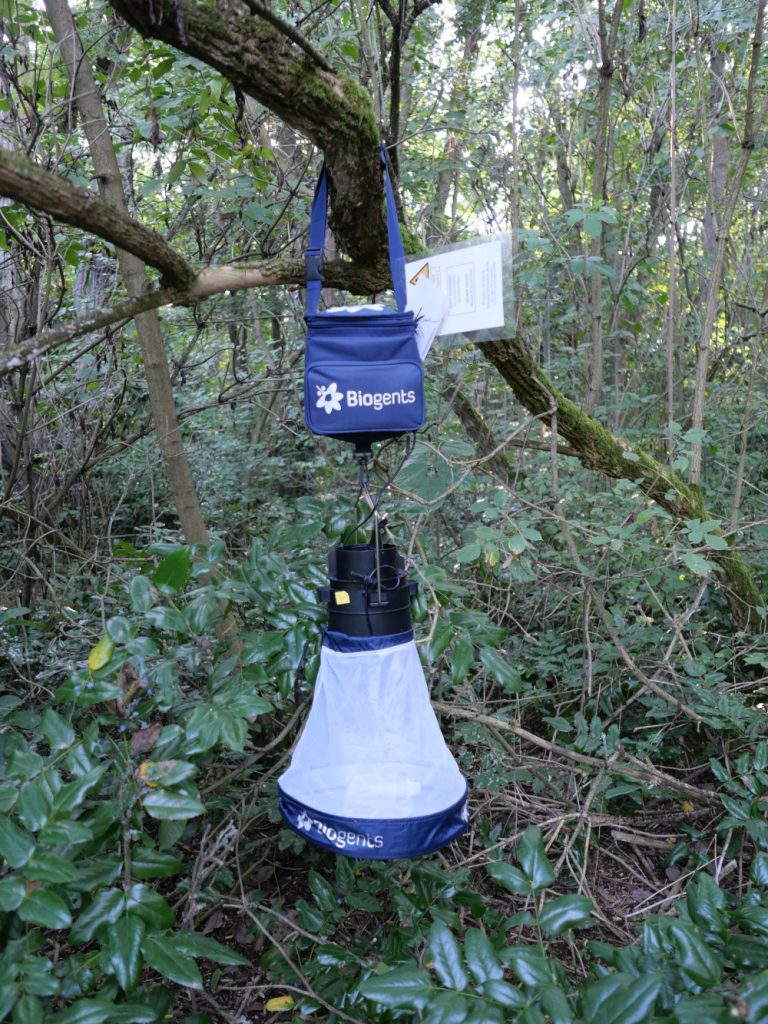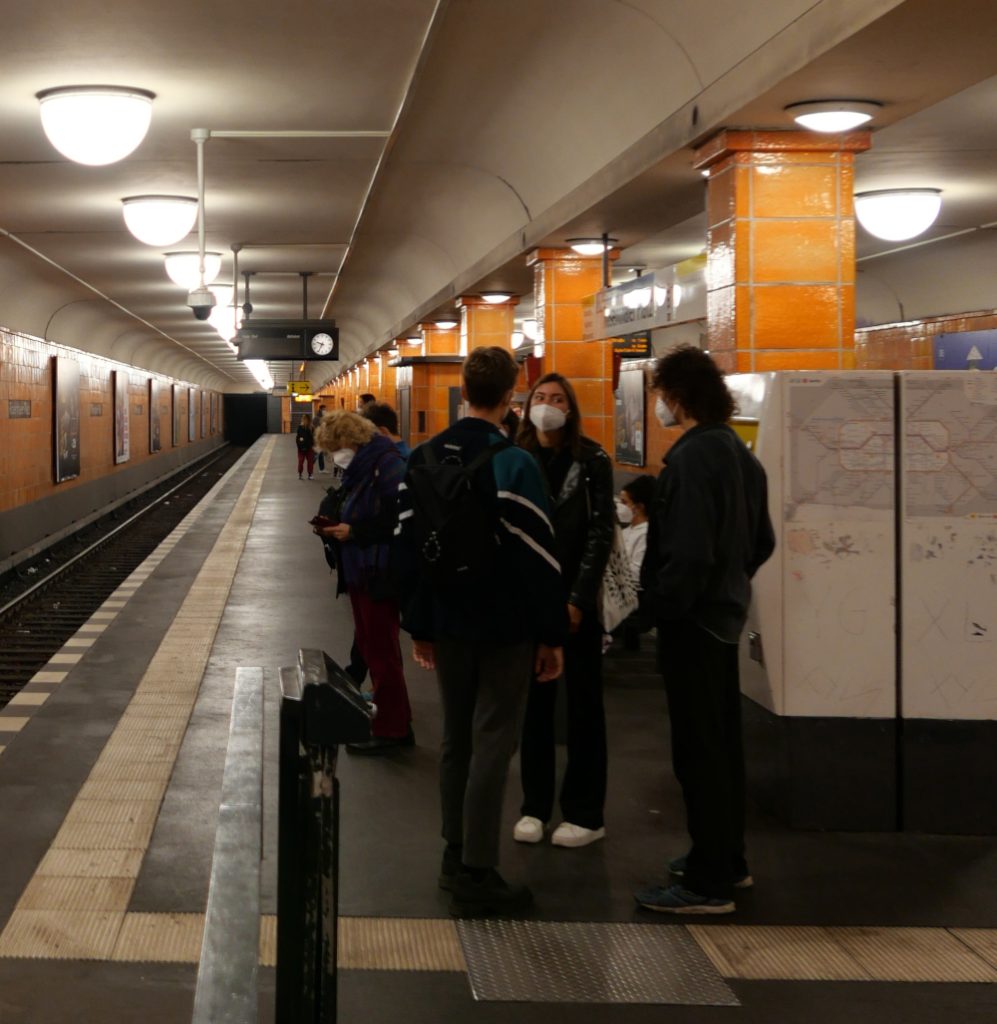In August 2023 two districts of Paris became the focus of a public health emergency involving the mass spraying of insecticide to eradicate the Aedes albopictus mosquito vector for dengue, zika, and a number of other diseases. Since arriving in southern Europe in the early 2000s the Aedes mosquito has spread steadily northwards reaching Germany, Switzerland, and most of France (Figure 1). Cities have become the focal point for a series of threats from zoonotic and vector-borne diseases: in addition to the Covid-19 pandemic we can point to a number of other emerging or ongoing threats including bird flu, Ebola virus, Nipah virus, and monkey pox.

Mosquito monitoring equipment in Südgelände, Berlin. Photo by Matthew Gandy, 2023
At least two-thirds of human diseases are animal in origin, mirroring successive step-changes in global history such as early agriculture, the domestication of animals, expanding trade routes, colonial legacies, and most recently, extended patterns of globalization. The history of urbanization is deeply woven into these epidemiological transitions through the rise of early settlements, the growth of ports, new patterns of industrialization, and in a contemporary context, the shift towards varieties of what Henri Lefebvre refers to as ‘complete urbanization’. To get a better sense of the relations between urban space and epidemiological risk we need to consider intersections with spheres of work and mobility, poverty and inequality, the role of specific topographies in fostering ecologies of risk, infrastructure systems (or their absence), and changing patterns of land use, including a variety of extractive frontiers.
How should we interpret increased levels of urban epidemiological risk associated with zoonotic and vector-borne disease? In this brief essay for IJURR I want to consider the conceptual utility of ‘zoonotic urbanization’ as an entry point for exploring the intersections between animal studies and contemporary urbanization. By using the term zoonotic urbanization I want to emphasize an expanded conceptualization of the multi-species city that encompasses multiple pathways of pathogenic exposure as well as a series of pandemic imaginaries. I interpret the word ‘animal’ somewhat loosely here to encompass an array of mammals, birds, insects, and even microorganisms that constitute distinctive epidemiological dimensions to the multi-species city. In particular, a focus on the structural dimensions to zoonotic urbanization offers an alternative to the bio-medical literature that lacks a coherent conceptualization of urban space. By ‘structural’ I want to underscore the role of an expanded epistemological framework that can link bio-physical processes such as the evolutionary dynamics of pathogens with the historical dynamics of capitalist urbanization and the production of space.
There is a long history of disease outbreaks leading to strategic biopolitical interventions to protect public health, such as the use of quarantines, vaccines, or infrastructure improvements. Running through these responses, however, and especially in a colonial context, we find the intensification of control measures over both land and people, as forms of scientific racism have driven attempts to rationalize urban space. Forms of biopolitical performativity include the aerial spraying of whole neighbourhoods with insecticides to control mosquito vectors, as was widely used in the Zika pandemic of 2016 that swept through Latin American cities. Yet spectacular interventions of this kind do not address the structural and topographic dimensions to heightened levels of epidemiological risk in poorer neighbourhoods.
The Covid-19 pandemic brought many of these existing inequalities into sharp relief with excess mortality rates recorded for ethnic minorities, the elderly, and those in virally exposed occupations. Covid-19 also revealed limits to pandemic governmentalities, exemplified by the abandonment of large-scale urban quarantines in China and elsewhere. The wider legacies of Covid-19 include extensive corruption in public procurement, increases in poverty and precarity, and an extending reach for algorithmic governmentalities.
The scale of zoonotic threats is indicative of the independent agency of nature. Intensified evolutionary pressures in cities have far-reaching epidemiological consequences. In the case of dengue, for instance, we encounter an ‘urban amplifier effect’ through the repeated exposure of human hosts. Similarly, the scale of Covid-19 infection fostered the emergence of multiple variants including Alpha in the United Kingdom, Omicron in South Africa, Eta in Nigeria, Delta and Kappa in India, Gamma and Zeta in Brazil, Lambda in Peru, Mu in Colombia, Theta in the Philippines, Epsilon and Iota in the USA, and many other mutated variants (Figure 2).

Passengers wearing protective masks on the Berlin subway. Photo by Matthew Gandy, 2021.
Specific ecological dimensions to urban environments such as heavily degraded water bodies, surface flooding, or accumulations of refuse can allow insect vectors for disease to flourish. We can also detect elevated levels of epidemiological risk within dilapidated or poorly maintained infrastructure networks including micro niches such as biofilms that can support multiple pathogens.
Zoonotic urbanization holds wider implications for architecture, planning, and landscape design. A more ecologically nuanced design discourse might serve as an epidemiological corollary to ‘animal aided design’. In urban lakes and watercourses, for example, the encouragement of natural predators for mosquito larvae such as fish or dragonflies has already had some success in landscape design projects in zones of epidemiological risk.
A greater emphasis on the affective characteristics of the zoonotic disease can inform multi-species and multi-subjectival readings of urban space. The existence of mood altering microrganisms within the human body such as Toxoplasma gondii is now well established. A more nuanced engagement with affect theory would build on emerging interest in the porosity of the body and a more precise delineation of the physiological dimensions to human behaviour.
In developing the concept of zoonotic urbanization, we can bring the conceptual fields of multi-species urbanism and multi-scalar urbanism into closer dialogue. A multi-scalar approach to urban epidemiology extends to multiple extractive frontiers and spaces of agro-capitalist intensification. The ethical parameters of the multispecies city clearly involve the treatment of animals in food production including the mass transportation of livestock, diverse hunting practices, and illegal trade in endangered species. Critical insights from urban epidemiology have revealed tensions between techno-managerial immunological paradigms and structural dimensions to public health, such as poverty, poor housing, and crumbling infrastructure systems. Similarly, an expanded reading of urban metabolism has enabled reflections on urbanization from multiple vantage points, including historical intersections between extractive frontiers and capitalist urbanization that have radically altered landscapes of epidemiological risk.
The pandemic imaginary forms the cultural counterpart to heightened levels of anxiety over the destructive potential of new and emerging diseases. A perceived loss of control over nature contrasts with the confident assertions of urban resilience discourse under the adaptive Anthropocene. Contrasting modes of cultural representation reveal specific facets to the structural determinants of ill health and environmental risk, including emerging literary genres that depict forms of hybridity, monstrosity, and affective unease, as reflected in works by Agustina Bazterrica, Cecilia Eudave, Samanta Schweblin, and other authors. In some cases, the threat of disease serves as a symbolic domain for forms of political violence or repressed dimensions to modernity. In this sense, the field of zoonotic urbanization illuminates multiple forms of violence and corporeal vulnerability.
There is a topographic dimension to critical perspectives on urban epidemiology. Urban density, for instance, is a recurrent cultural motif that has elevated generic stereotypes such as the ‘Chinese city’ to a prominent position within the Euro-American epidemiological imagination. We need a conception of zoonotic urbanization that challenges an epidemiological imaginary that resides in an ‘urban other’ exemplified by variants of high-rise density or the “amorphous urbanism” of the unplanned metropolis.
An affirmative biopolitical paradigm raises the possibility for alternative modes of intervention that recognize the rights of non-human others. Implicit within an affirmative mode of biopolitical intervention is the role of human intentionality in protecting the flourishing of life as a whole. In the place of culls, for example, there are more humane ways of controlling the numbers of rats or other animals that also occupy human space. Similarly, radical changes in human diet have implications for agro-capitalist futures. The analytical vantage point of zoonotic urbanization highlights a series of unavoidable political and epidemiological dilemmas under late modernity.
Matthew Gandy is Professor of Geography at the University of Cambridge and an award-winning documentary filmmaker. He has published widely on cultural, urban, and environmental issues is a former co-editor of IJURR.
All essays on Animals and the City
Introduction: Animals and the City
Rivke Jaffe
On More-than-human Public Space: Kabootar Chowk in Karachi
Aseela Haque
Affective Geographies: Managing Feral Cat Colonies in Rome
Giovanna Capponi
Urban Animals: Bison on Display, and the Grand Temporal and Geographic Scales of Urbanization
Dawn Biehler
The Metropolis and Metabolic Life
Maan Barua
Zoonotic Urbanization
Matthew Gandy
Cats, Commensal Rodents and Cosmopolitics in Cape Town
Nicoli Nattrass & Zoë Woodgate
Related IJURR articles on Animals and the City
Weeds, Pheasants and Wild Dogs: Resituating the Ecological Paradigm in Postindustrial Detroit Paul Draus and Juliette Roddy
The Zoonotic City: Urban Political Ecology and the Pandemic Imaginary Matthew Gandy
Rethinking Urban Epidemiology: Natures, Networks and Materialities Meike Wolf
Of Holy Cows and Unholy Politics: Dalits, Annihilation and More-than-Human Urban Abolition Ecologies Rajyashree N. Reddy
